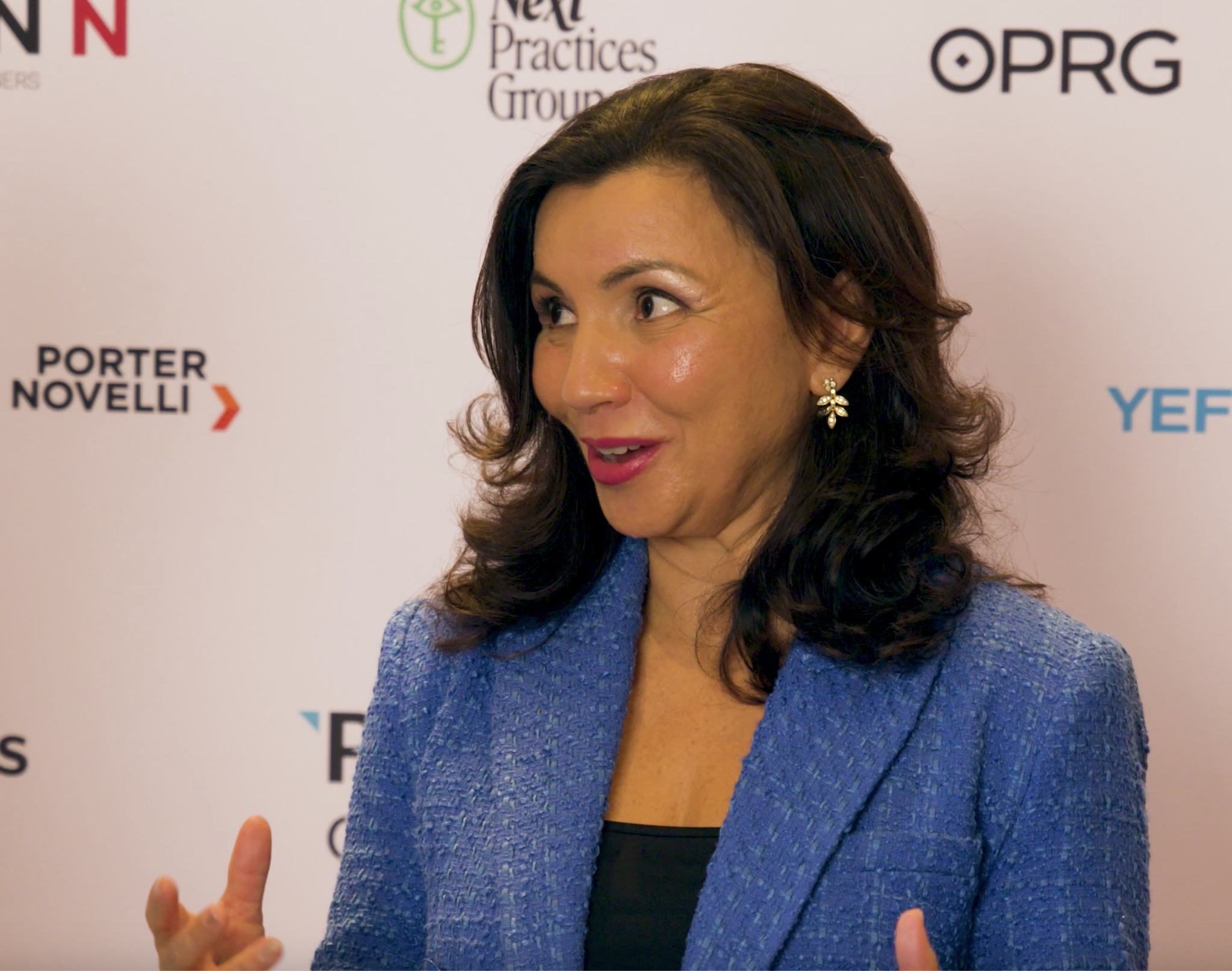Paul Holmes 01 Jul 2013 // 3:11AM GMT

Is the role of chief communications officer—a role that has many companies formalized only relatively recently—becoming obsolete? At a time when the ability of an organization to engage, relate and communicate with key stakeholders is becoming more critically important than ever, the question seems absurd. But there is a case to be made that increasing importance of stakeholder engagement is a serious threat to the role of the senior corporate communicator.
That’s because the increasing importance of stakeholder engagement is a challenge not only for corporate communicators, but for the entire organization. And the key factor driving that change—the way in which social media are changing the relationship between organizations and their key publics—is forcing a significant shift in the way marketers, in particular, view their role.
For many marketers, social media have changed everything. They have been forced to recognize that the brand is no longer defined by all the things the company says about itself—its advertising, its website, its sponsorships, its press releases, its executive presentations. Rather, in the social media age the brand is defined by what other people—the media and opinion leaders, but also ordinary employees, consumer, neighbors—say about it.
To a large extent, this means that controlled messages—the things (advertising is the most obvious example) that marketers have traditionally been most comfortable with—are declining in importance.
Activities that engage consumers in dialogue, that initiate conversations, that drive third-party word-of-mouth—activities that have historically been integral to good public relations—are becoming more central.
As a result of this, marketers are being forced to think about other stakeholders, most obviously employees. If the brand is a promise, employees are those responsible for delivering on that promise. They are—whether organizations like it or not—ambassadors for the brand. Any dissonance between brand messaging and the experience employees deliver to consumers will be noted and become fodder for online criticism. A complaint that a customer might once have shared with five or six close friends can now be shared with a global audience of five or six million.
Marketers are also being forced to think about issues that have traditionally fallen under the “corporate” umbrella but are now having a much more significant impact on the brand or brands. Starbucks failure to pay taxes in the UK resulted in fierce criticism; Nestle’s use of Malaysian palm oil—considered environmentally harmful—spawned a consumer boycott of its products; an ad campaign for Kimberly Clark’s Huggies brand of diapers poked gentle fun at dads and prompted an angry backlash among “daddy bloggers.”
There’s nothing particularly new about this, for corporate communicators at least. But in the social media age, consumers can much more easily find out which brands belong to a corporation that has angered them and take out their anger on those brands, and marketers have come to understand that any controversial activity will be discovered much more quickly and punished much more severely than in the past.
Smart marketers are also thinking about issues such as corporate social responsibility, which can boost consumer sales and loyalty (or destroy it, if a company is perceived as irresponsible); public affairs and the regulatory environment, which can forces changes or even the withdrawal of specific products; and crisis planning and preparedness.
In other words, marketers are being forced to think about a wide range of issues that have historically been the domain of corporate communications. And companies are being forced to reconsider the relationship between the marketing and communications functions, and whether in an interconnected world it still makes sense for the two functions to be seen as separate and distinct.
(To be fair, it has never made sense for the corporate communications function to be responsible for every key relationship—investors, policymakers, communities, employees—except the one that demands the greatest share of corporate resources. So the convergence of the two functions is as logical from the other perspective.)
There are several ways in which this could play out in terms of organizational structure:
1. It is possible that the two functions—marketing and corporate communications—will continue to operate as “separate but equal,” working closely together, each with its own clearly defined area of responsibility. This seems to me increasingly unlikely, if marketers begin to take a more expansive view of their roles, and as the lines between marketing and corporate communications continue to blue.
2. It is possible that corporate communications will come to be seen as a subsidiary function to marketing—a relationship that already exists in many organizations, but which seems increasingly short-sighted, because if suggests that other stakeholder relationships are subsidiary to the needs of consumers.
3. It is possible that the two functions will become one, creating an organization role that is responsible for considering and balancing the expectations of multiple stakeholders. This function would have a broader remit than the traditional marketing function.
The third possibility seems to me to be the most likely—although I have to admit that I have always believed that this approach makes sense, long before social media made the possibility more urgent. I have always believed that managing all stakeholder relationships in an integrated, holistic way (rather than having marketers manage the customer relationship, HR manage the employee relationship, finance handle the investor relationship, etc.) is the most efficient and effective way of managing organizational and brand reputation.
This integrated approach to stakeholder relations will be familiar to public relations people. It is, in fact, the role that our industry’s pioneers envisaged for public relations but which the profession has either lost or abandoned.
What this function will be called is far from clear. There are several possibilities:
1. Marketing: It’s possible that the definition of marketing will simply expand to include the marketing of ideas; marketing to employees; marketing to regulators and legislators; marketing to reporters and other stakeholders. I would be a little concerned, though, that this term will lead to an over-emphasis on customers over other stakeholders, sales over other relationship-focused metrics.
2. Corporate communications: It’s possible that the customer will simply come to be seen as one of many corporate stakeholders, and that marketing will become one element—alongside employee communications, public affairs, executive communications, investor relations—of a broad corporate communications function. The problem with this term is that “communication” is not the be-all and end-all of stakeholder relationship management. Relationships are influenced far more by how an organization acts than by what it says.
3. Marketing and corporate communications: An obvious name for the integration of the two functions, but one that doesn’t really address any of the criticisms leveled at “marketing” and “corporate communications” individually.
4. Public relations: This would be my own preference, since I believe this is both the historic and literal meaning of the term public relations—a function that manages the relationships between an organization and all of the publics upon whom it depends for its success. Unfortunately, the meaning of the words “public relations” has been corrupted to the point that even many practitioners consider the term a synonym for media relations or earned media. Redefining the term to mean something much broader may be difficult at this point.
5. Stakeholder engagement—or some similar, entirely new term: This may be the best compromise, since it does not imply that corporate communications has been subsumed by marketing, or vice versa, and does not come with any baggage. This is the term I will use for the merged function for the rest of this piece.
This discussion of what to call the merged marketing/communications function leads to another, inevitable question, which concerns who will lead this function. If the function is led by a marketer, it is more likely to retain the “marketing” descriptor. If it led by a communications or public relations executive, one of the other possibilities is more likely.
So when these two functions converge, who will lead?
Philosophically, corporate communicators or public relations people ought to have the advantage. Balancing the needs of multiple stakeholders ought to come much more naturally to PR people than to marketers. And the values and skills that are central in the social media age—authenticity, transparency, influence, engagement, dialogue, conversation—have always been essential to good public relations.
Pragmatically, marketers are perhaps in a stronger position. Power within an organization is defined largely (but not entirely) by budget—and the marketing department typically has a budget many times larger than that of corporate communications. In many organizations, the easy option will be to have the larger organization digest the smaller. (And this seems to be more likely in organizations in which the public relations function is seen as being primarily about communication, rather than policy.)
But I suspect that in many organizations, the decision about who leads will come down to the individuals involved, rather than the functions they represent. CEOs will want the smartest, most trusted advisor in the senior stakeholder engagement role, regardless of his or her professional background. A smart marketing executive (think Marc Pritchard at Procter & Gamble) should be able to learn to take a broader stakeholder perspective. A smart PR professional (think Jon Iwata at IBM) should be able to take on the marketing role.
Right now, I worry that in many organizations, the senior marketing professional is a more respected member of the senior management coalition than the senior corporate communicators. He or she is likely to have a larger salary in addition to a larger budget, to have the “seat at the table” that PR people have coveted for so long.
So what do corporate communicators need to do in order to put themselves in a position to take a leadership role in this new organizational structure? I believe there are several essential challenges that the profession as a whole must address:
1. Embrace data and analytics: One advantage that marketers enjoy is that they have always had and made use of a vast amount of data. Until relatively recently, that data was expensive, and much easier to justify in the context of a multibillion dollar ad budget than a multimillion dollar (at best) communications budget. But new social and digital analytics make data much more accessible, often from sources (online communities, social networks, etc.) that fall under the purview of public relations. Corporate communicators need to get comfortable mining, understanding and using this data to support their decisions and provide empirical support for their campaign priorities.
2. Engage fully through social media: Social media is like a giant cocktail receptions, with hundreds of discussions and debates taking place at once—many of them focused on companies and their products. The first instinct of many marketers was to stride into the room, climb up on a table, and shout, “Listen to me,” the social media equivalent of intrusive, unsolicited advertising. Unfortunately, the first instinct of many communicators was to lurk in the room, eavesdropping and monitoring, but rarely engaging. Communicators need to join the conversation, listening and responding, building a dialogue.
3. Become content creators: Conversation is only half of the social media challenge; the ability to create and share original content is the other half. This content need to be authentic, engaging, shareable, and sustainable—all things that PR people should be focused on. It needs to earn the attention of an audience that can ignore or navigate away from content it doesn’t like or want. Communicators need to demonstrate that they know how mine their organizations for the stories that will form the basis of this content: employee stories, consumer stories, community stories. And they need to be familiar with the full range of digital media—viral videos, infographics, mobile apps, SEO, even paid advertising—to engage consumers and other stakeholders.
4. Play offense as well as defense: Too many corporate communicators are reactive, focused on responding to external threats to the organization’s reputation, rather than proactive. They need to reach out to key stakeholders—using conversation and content, via social channels and more traditional media—and give them a reason to engage with the organization. They need to spend as much time building new relationships as protecting existing relationships. Marketers are expected to create big, attention-grabbing campaigns, which means coupling big creative ideas with bold execution. Corporate communicators tend to be more conservative; they will need to increase their tolerance of risk if they are to manage a merged function.
5. Recognize the value of advertising: Again, too many corporate communicators view public relations and advertising as different approach to solving the same problem, a perspective reflected in the “earned media” vs “paid media” discussion. PR should not be viewed as a less expensive, more credible version of advertising; rather, advertising is one tool that can be used by public relations—or stakeholder engagement—to build, maintain and protect relationships between an organization and its publics.
6. Think beyond “communications”: This new role is not simply about communication, and it’s certainly not about delivering messages—which is the way in which both marketers and corporate communicators have traditionally defined their roles. For one thing, we live in an era in which those responsible for stakeholder engagement need to spend at least as much time listening as they do talking. For another, relationships are defined much more by how an organization behaves than by what it says, which means that the most important role for the stakeholder engagement function involves shaping policy and influencing organizational behavior—not merely explaining that policy or apologizing for that behavior.
7. Surrender control: In the social media age, controlling the message is no longer desirable or—more to the point—possible. In theory, public relations people should be more comfortable surrendering control than marketers: it’s something they do every time they pitch a story to a reporter, or respond to a reporter’s questions. The extra credibility earned by allowing others to tell your story is the raison d’etre of many PR departments. Pitching to a blogger, posting a viral video, responding to social media criticism is theoretically no different. But the fact is that many PR people find the relative anarchy of the social media realm intimidating—or worry that their CEOs won’t appreciate any story so authentic that it occasionally strays from the approved corporate line.
8. Adopt business metrics: It’s far from obvious that marketers have succeeded in linking their key metrics to business performance, or that those metrics have changed with the times. But there is no question that marketing metrics have greater traction within organizations, and that they have in many cases defined the measurement that organizations demand from their PR departments and suppliers (think the alarmingly stubborn affection for advertising value equivalency). But in a changing environment, there is an opportunity for communicators to develop metrics of their own, which are appropriate to the social media age and which relate directly to business objectives. Measures such as net promoter score put the focus on creating brand advocacy, and reducing brand criticism—and have been shown to predict future business performance.
If convergence is coming, and if communicators are not to be rendered obsolete—or subservient to marketing—many of them will need to change the way they view their roles, and the way they are viewed inside the company. If they do, they can change what looks like an existential threat into an unprecedented opportunity.


































.jpg)



















.tmb-135x100.jpg)










